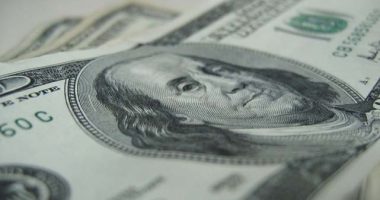The Asian FX market is poised for significant movement as two major currencies, the Japanese Yen (JPY) and Australian Dollar (AUD), face opposing fundamental forces. For the Yen, the driver is intensifying speculation around a historic Bank of Japan (BoJ) policy shift away from its long-held ultra-dovish stance. Conversely, the Aussie dollar is contending with renewed deflationary risks from China, a key trading partner that heavily influences its economic outlook.
Japanese Yen: Looking Past Politics to a Hawkish BoJ
While recent political upheaval in Tokyo has captured headlines, currency traders are largely looking beyond the turmoil. The resignation of Prime Minister Ishiba and the ensuing leadership contest have done little to dampen the Yen’s strength. Instead, the currency’s momentum is being fueled by growing conviction that the BoJ is finally preparing to normalize monetary policy.
This hawkish sentiment briefly drove the USD/JPY pair to a low of 146.306, its weakest point since early September. The core of this thesis lies in Japan’s economic data. A resilient economy, coupled with a meaningful pickup in wage growth and private consumption, is creating conditions for sustained, demand-driven inflation. Furthermore, a recent trade deal with the U.S. in August is expected to bolster economic activity through Q4, giving the BoJ further confidence to act.
As reported by Reuters, BoJ officials view the external risks to growth as diminishing, allowing them to focus more squarely on achieving their price stability target. Governor Kazuo Ueda has previously signaled a readiness to raise rates if the economy progresses as forecast. This view was echoed by influential lawmaker Taro Kono, who stated, “We need to fix the yen rate… the Bank of Japan needs to increase the interest rate,” warning that delay would only prolong inflationary pressures on imports.
Key USD/JPY Scenarios:
-
Bearish for USD/JPY (Yen Strengthens): Hawkish BoJ commentary, softer US inflation data, or dovish signals from the Fed could push the pair toward 145.
-
Bullish for USD/JPY (Yen Weakens): A cautious BoJ delaying hikes, coupled with hot US producer prices, could drive the pair back toward the 150 level.
Traders should watch the upcoming US Producer Price Index (PPI) release closely. A higher-than-expected reading could reinforce a more hawkish Federal Reserve stance, temporarily offsetting Yen strength.
Australian Dollar: Braced for China Deflation Data
While the Yen is riding a wave of hawkish speculation, the Australian Dollar is under pressure from its dependence on China. All eyes are on China’s August inflation data, with economists forecasting a return to deflation for consumer prices (-0.2% YoY). Producer Prices are also expected to remain deep in negative territory (-2.9% YoY).
As highlighted by analysts at Bloomberg, persistent deflation in China signals weak domestic demand, which is a bearish signal for commodity-exporting economies like Australia. China accounts for approximately one-third of all Australian exports. A slowdown there directly impacts Australia’s terms of trade, labor market, and ultimately, the Reserve Bank of Australia’s (RBA) policy decisions.
RBA Governor Michele Bullock has previously underscored China’s pivotal role, noting that fiscal stimulus from Beijing could help cushion the Australian economy. The absence of such support, combined with deflationary data, would support a more dovish outlook for RBA interest rates, weighing heavily on the AUD.
Key AUD/USD Scenarios:
-
Bearish for AUD/USD (Aussie Weakens): Weak Chinese inflation data confirming deflationary pressures could push the pair toward key support at $0.6550.
-
Bullish for AUD/USD (Aussie Strengthens): A surprise uptick in Chinese data or hawkish RBA rhetoric could lift the pair toward the $0.6650 resistance level.
The interest rate differential between the RBA and the Fed will also be crucial. Softer US data that fuels bets on Fed rate cuts could narrow the differential and support the Aussie, as covered in-depth by The Financial Times. However, the immediate catalyst remains squarely on China’s economic health.
In summary, the Yen is rallying on the prospect of the BoJ closing the door on negative rates, while the Aussie is vulnerable to a slowdown in its largest trading partner. This divergence sets the stage for continued volatility in both currency pairs.










